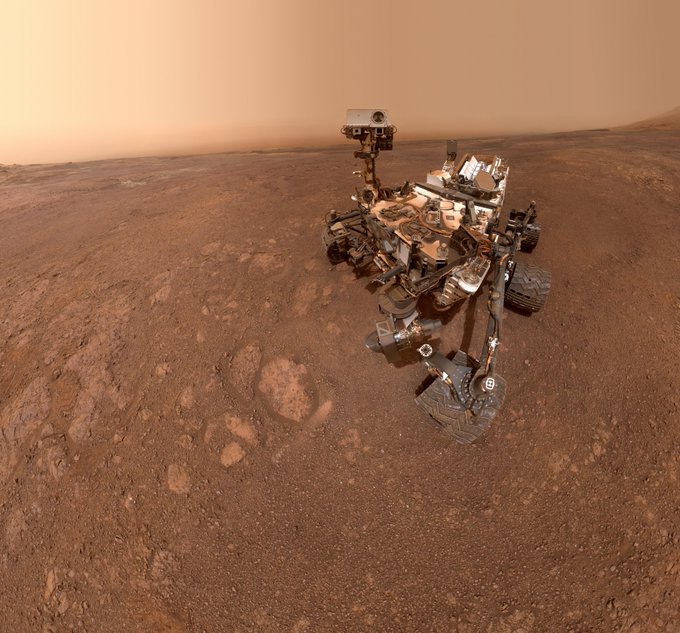
Curiosity self-portrait at 'Okoruso' drill hole, Mars. (Image: mars.nasa.gov)
After spending more than a year on the twisting ridge on Mars that has been the robotic explorer's home, NASA's Curiosity rover has snapped its last selfie as it moves on to new sights on the Red Planet.
After having collected new samples from the Vera Rubin Ridge, the car-sized rover will now descend toward a clay region of Mount Sharp.
It will head into the 'clay-bearing unit,' which sits in a trough just south of the ridge.
"Clay minerals in this unit may hold more clues about the ancient lakes that helped form the lower levels on Mount Sharp," NASA said.
The stunning selfie

Curiosity's Selfie at 'Rock Hall': A selfie taken by NASA's Curiosity Mars rover on Sol 2291 at the Rock Hall drill site, located on Vera Rubin Ridge.(Image: NASA/JPL-Caltech/MSSS)
1. On January 15, Curiosity used its Mars Hand Lens Imager (MAHLI) camera on the end of its robotic arm to take a series of 57 pictures, which were stitched together into the selfie.
2. The images feature a location on the ridge called Rock Hall, which the rover drilled on December 15.
3. The Rock Hall drill hole is visible to the lower left of the rover; the scene is dustier than usual at this time of the year due to a regional dust storm. Curiosity has been exploring the ridge since September 2017.
What is the Curiosity rover mission to Mars?
Part of NASA's Mars Science Laboratory mission, Curiosity is the largest and most capable roverever sent to Mars. It was launched on November 26, 2011, and landed on Mars on August 5, 2012.
Curiosity was designed to assess whether Mars ever had an environment able to support small life forms called microbes. Its mission is to answer the question, 'Could Mars ever have supported small life forms called microbes?'
Early in its mission, Curiosity's scientific tools found chemical and mineral evidence of past habitable environments on Mars. It continues to explore the rock record from a time when Mars could have been home to microbial life.







No comments:
Post a Comment